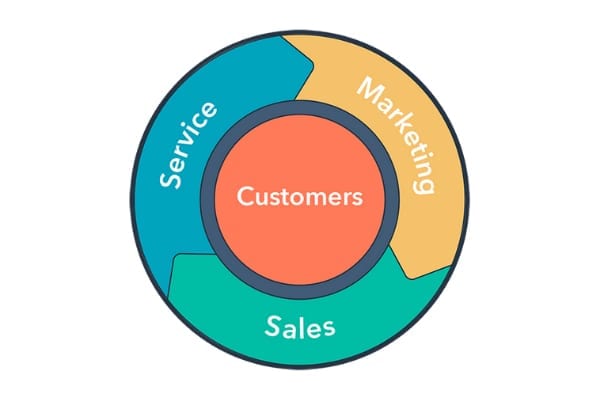
It’s an understatement to say marketing has changed since the Mad Men era of print advertising — when actors posed as white-coat-wearing doctors to recommend cigarettes.
As marketing evolved over time to meet the growing awareness of the culture, brand creators and advertising execs have had to “work harder” at creating a feeling of need, jealousy and inadequacy to get their audience to buy, buy, buy. Today’s woke society does not trust blatant sales messages, because they know you are trying to sell them something.
That’s why truly effective marketing is about building trust. More brands are gravitating toward inbound marketing — a methodology for doing business grounded in information sharing, user-centered design and collaboration. Instead of pushing advertisements on the audience, it’s about creating value and earning the business.
Marketing built upon deception and manipulation won’t work in today’s instant messaging and social media centric culture because we are inundated by the same-old way of thinking.

A few years ago, a digital ad for L’oreal popped up on my screen. I laughed out loud. Penélope Cruz Sánchez was the model and she was so over-the-top airbrushed, she looked like a cartoon.
These shady marketing tactics manipulate its customers while grooming an entire generation of new customers into thinking they aren’t good enough, that they need these products to be a better version of themselves.
There is a name for this.
It’s called gaslighting.
What is gaslighting in marketing?
 Gaslighting is “an insidious form of manipulation and control … The victims of gaslighting are misled with false information and forced to doubt what they know to be true, even about themselves,” according to Psychology Today.
Gaslighting is “an insidious form of manipulation and control … The victims of gaslighting are misled with false information and forced to doubt what they know to be true, even about themselves,” according to Psychology Today.
 Gaslighting in marketing happens when companies or brands are purposefully misleading people.
Gaslighting in marketing happens when companies or brands are purposefully misleading people.
Marketing and advertising agencies have been the worst gaslighters in history. It happens when brands e-mail people without having their consent. It happens when brand over-exaggerate the effectiveness of their product or service to make a sale. It happens whenever a company or organization is trying to capitalize on a politically-charged topic.
The Mad Men TV show did an excellent job portraying a culture of misogyny and racism in the marketing and advertising world.
Fast forward to a more recent time in marketing history. In 2015, the Federal Trade Commission went after Volkswagen for its self-described “clean diesel,” which was later revealed that VW cheated on its emissions tests. “Red Bull gives you wings” marketing campaign resulted in a $13 million pay-out because Red Bull paired its 20-year-old tagline with promises that the energy drink improved concentration and reaction. Olay had a public relations nightmare on its hand in 2009 when its Definity eye cream ad starring famous 1960s model Twiggy with a face free of wrinkles made headlines for digitally manipulating her photos.

About this Blogger: Heather Bragg
Before Heather entered the world of marketing, she was a newspaper journalist. Today, she is best known for developing well-rounded marketing plans that focus on the long-term.
Free Interactive Workbook

No one wants to spend time or money on marketing efforts that don’t work! This marketing workbook and guide will help you develop a strategy that brings results!
Get social with us!
Like what you’re reading?
Subscribe to Bragg Media’s monthly newsletter.
Are you ready to
break-up with your agency?
Let’s talk about it!
How has gaslighting changed marketing?

Gaslighting sums up why marketing and sales are among the most dishonest and manipulative when it comes to professional ethics, sharing space with … wait for it … politicians.
It’s why the Truth in Advertising Act of 2014 was passed to force Internet, radio, television and print ads to be truthful, not misleading, and, when appropriate, backed by scientific evidence.
Is it any wonder why today’s audience doesn’t trust marketing and sales messages? Advertising has a history of perpetuating emotionally abusive rhetoric just to make a buck. People crave authenticity. They’ll even pay to unsubscribe from stolen mailing lists.
What should marketing look like?
 Marketing Retainers
Marketing Retainers
Branding, creative, digital and strategy with results.
Marketing and sales should always be committed to transparency, honesty and a customer-centric attitude. Mainly, businesses should stop putting friction between what they’re selling and their customer. That means treating your customers like people throughout the buyer’s journey and stop moving them through a rigid sales process like anonymous cattle.
Start by throwing the sales funnel in the trash. Adopt the flywheel model instead. This business philosophy centers on attracting, engaging and delighting your customers. Full stop.

For example, HubSpot’s Customer Code is focused “obsessed” with creating a company their customers will love. They use these customer tenants to grade their own performance:
- “Earn my attention, don’t steal it.”
- “Treat me like a person, not a persona.”
- “Solve for my success, not my systems.”
- “Use my data, but don’t abuse it.”
- “Ask for feedback, and act on it.”
- “Own your screw-ups.”
- “Help me, help you, by helping myself.”
- “I don’t mind playing, but I do mind being played.”
- “Don’t block the exit.”
I love this list! It addresses the gaslighting problems that have plagued this industry. Good, effective marketing comes down to being honest, having integrity and “treating others the way you want to be treated.”

